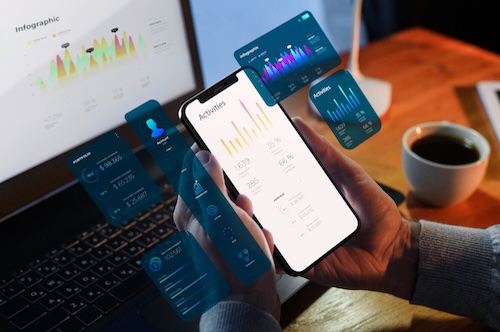In 2025, brand safety has moved beyond simply avoiding controversial ad placements. Today, brands must ensure that every partnership—especially those involving influencers—aligns with their values and public image. Social media APIs have emerged as a critical tool in this effort, enabling precise, automated detection of risky influencer behavior before it damages a brand’s reputation.
From vetting influencers for past controversies to monitoring real-time audience sentiment, APIs allow businesses to move faster and smarter in safeguarding their image. In this guide, we will explore how social media APIs work, what they can detect, and how they fit into modern brand safety strategies.
Understanding Brand Safety in 2025
Brand safety is not just about avoiding inappropriate content—it is about maintaining consumer trust. In 2025, audiences expect brands to take proactive measures to ensure that every public association aligns with their ethical and cultural values.
Why brand safety matters more than ever
The global influencer marketing industry is projected to reach $24 billion in 2025, and with this growth comes increased scrutiny. Consumers are quick to call out brands that associate with individuals or content that promote harmful narratives, discrimination, misinformation, or offensive behavior. One misstep can lead to viral backlash, loss of sales, and even long-term brand damage.
Key threats to brand safety today
- Past controversial posts resurfacing and sparking outrage.
- Hidden affiliations with extremist or harmful groups.
- Offensive or discriminatory remarks made on social platforms.
- Fake followers or engagement manipulation misleading brands.
- Non-compliance with advertising guidelines.
By integrating influencer vetting for brand safety solutions powered by APIs, brands can address these threats before campaigns go live.
The Role of Social Media APIs in Influencer Vetting
Social media APIs provide structured access to influencer and audience data from platforms like Instagram, TikTok, YouTube, and X (formerly Twitter). Instead of manually reviewing content, APIs allow brands to pull posts, engagement stats, and audience demographics directly into their vetting tools.
How APIs improve influencer vetting
Using APIs, brands can:
- Access full content history for a more accurate risk assessment.
- Detect inappropriate language or sensitive keywords in captions and comments.
- Analyze audience sentiment trends over time.
- Verify authenticity by comparing follower growth and engagement patterns.
For example, with the social screening API, businesses can quickly scan an influencer’s past activity and flag potential risks without manual review delays.
Key Risk Indicators Detected by APIs
Detecting risky influencer behavior requires tracking multiple data points. APIs can surface patterns and anomalies that humans might miss in manual checks.
Content-related risks
APIs can scan image descriptions, hashtags, and text posts for:
- Hate speech or slurs.
- Explicit content or nudity.
- Political extremism or misinformation.
Engagement-related risks
APIs also identify unusual activity:
- Sudden spikes in followers suggesting fake account purchases.
- High bot engagement ratios indicating low-quality audiences.
- Negative comment sentiment trends.
Compliance and brand alignment
- Checks for FTC compliance in sponsored posts.
- Identifies posts violating platform content rules.
- Highlights any partnerships with competing brands.
Comparing Manual vs API-Powered Influencer Vetting
A comparison between traditional and API-powered approaches shows why APIs are becoming the preferred choice in 2025.
How Social Listening APIs Support Brand Safety
Social listening APIs don’t just analyze influencers—they track conversations happening around them. This ensures brands catch issues early, sometimes before the influencer themselves even addresses them.
Benefits of integrating social listening
- Real-time alerts on emerging controversies.
- Tracking trending hashtags linked to the influencer.
- Sentiment scoring for audience reactions to posts.
For instance, the social listening API can help detect when negative sentiment is rising, allowing brands to pause or adjust campaigns before damage spreads.
Case Example: Avoiding Risk Through API Monitoring
Imagine a beauty brand planning a major campaign with a popular TikTok influencer. A manual review of recent content shows no red flags. However, using a social media API, the brand discovers:
- Offensive language used in tweets from five years ago.
- A spike in followers from suspicious accounts in the past month.
- A growing wave of negative comments about the influencer’s recent collaboration with a competitor.
Armed with this data, the brand chooses a different influencer—avoiding potential backlash.
Building a Brand Safety Workflow with APIs
A strong API-powered brand safety workflow includes multiple steps to ensure thorough vetting.
Step 1: Initial influencer search
Pull candidate lists from influencer databases or via platform APIs.
Step 2: Content history analysis
Run bulk scans for past risky content using automated keyword and sentiment detection.
Step 3: Audience authenticity checks
Analyze engagement ratios, follower demographics, and growth patterns.
Step 4: Ongoing monitoring
Set up real-time alerts for any content that matches brand risk criteria.
The Future of Brand Safety Technology
By 2025 and beyond, API technology will become even more sophisticated. We can expect:
- AI-powered image recognition for detecting visual brand risks.
- Cross-platform identity mapping to track influencers across multiple channels.
- Automated compliance reporting for advertisers.
Brands that embrace these tools will not only protect themselves but also foster greater trust with consumers.
Conclusion
Brand safety in 2025 is about more than avoiding the wrong ad placement—it is about proactive, continuous risk management. Social media APIs have transformed influencer vetting, enabling brands to make faster, data-driven decisions that protect reputation and revenue.
By integrating solutions like influencer vetting for brand safety, social screening, and social listening API, companies can navigate the complex influencer landscape with confidence.
FAQs:
1. What is brand safety in influencer marketing?
Brand safety refers to strategies and tools used to ensure that brand partnerships, especially with influencers, do not expose the company to reputational risk. This involves screening for inappropriate, offensive, or controversial content in an influencer’s history, as well as ongoing monitoring.
2. How do social media APIs help with brand safety?
Social media APIs provide structured data access from platforms, allowing automated scans of influencer content, audience engagement, and sentiment. This helps brands quickly detect risky behavior without manually reviewing thousands of posts.
3. What types of risks can APIs detect in influencers?
APIs can detect a range of risks, including offensive language, hate speech, misinformation, inappropriate imagery, fake followers, bot engagement, and negative sentiment trends.
4. Are API-based checks more reliable than manual reviews?
Yes, API-based checks are faster and more consistent. They analyze entire content histories and engagement metrics, whereas manual reviews often sample only a fraction of posts, increasing the chance of oversight.
5. Can social listening APIs prevent PR crises?
While no tool can guarantee prevention, social listening APIs can significantly reduce risk by flagging emerging controversies in real time. This gives brands a chance to pause campaigns or issue statements before backlash grows.
6. Is influencer vetting with APIs expensive?
Initial setup may involve integration costs, but over time, API-based vetting reduces expenses by eliminating the need for extensive manual reviews. Many brands find it more cost-effective in the long run.
7. How often should influencers be screened?
Best practice is to screen influencers during selection and to continue monitoring them throughout the campaign. This ensures new issues are caught as they arise.
8. What API tools are best for brand safety?
The best tools combine social screening, influencer vetting, and social listening capabilities. Platforms like GetPhyllo’s influencer vetting and social listening API are designed for comprehensive brand safety management.











.avif)
.avif)